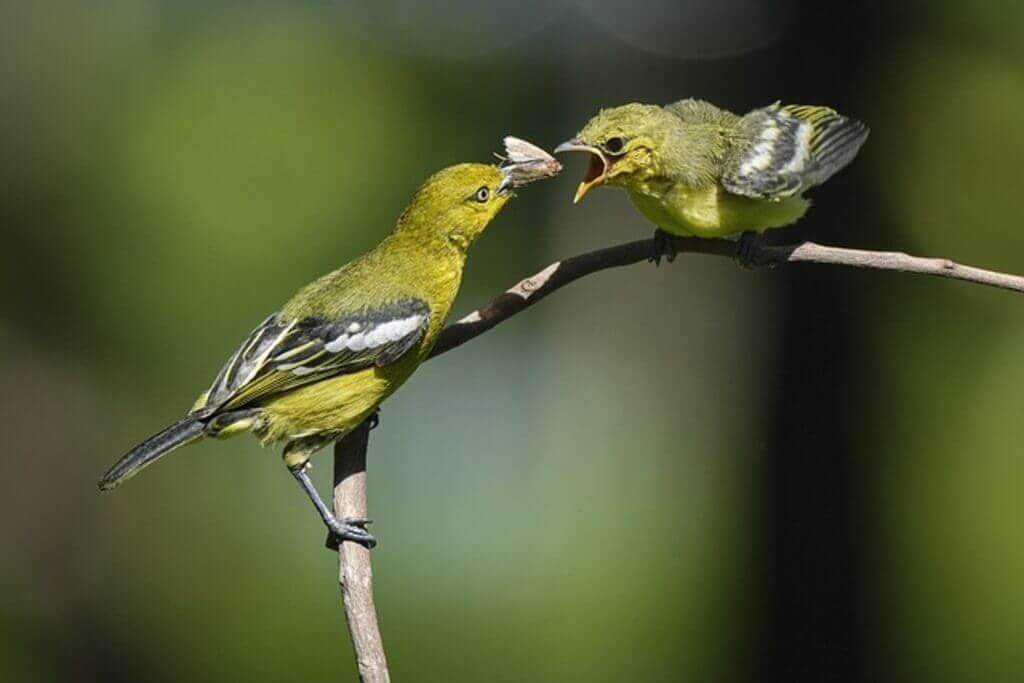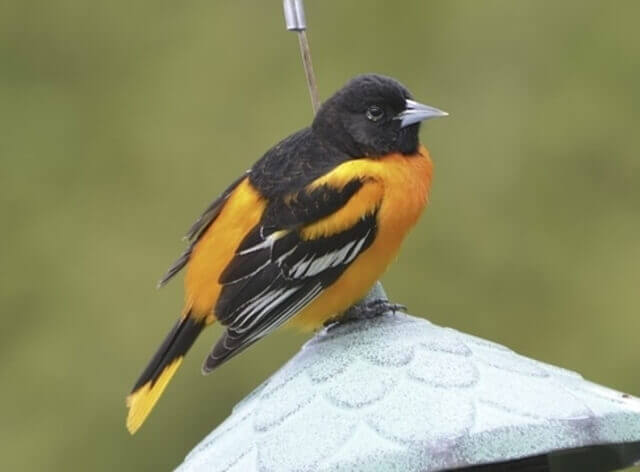Since the 1970s, Gypsy Moths have been steadily destroying North American forests. They lay eggs in trees and release a toxin that slowly kills them from the inside out. The first signs of an invasion are clusters of dried leaves on branches as the caterpillars eat their way through foliage at night.
By the time you see white egg masses dangling from tree limbs, it’s too late for prevention measures to save your favorite campsite or hiking trail. The best course of action is to attract birds that feed on them.
There are many birds that eat gypsy moths, and in this article will go over the 19 most common ones, including some fun facts about each bird.
Table of Contents
- 1 Key Takeaways:
- 2 The Role of Birds
- 3 The Role of Gypsy Moths
- 4 Gypsy Moth Impact on Bird Populations
- 5 Gypsy Moth Impact on Massachusetts
- 6 Birds That Eat Gypsy Moths
- 6.1 House Sparrrow
- 6.2 Eastern Bluebirds
- 6.3 Blue Jay
- 6.4 Gray Catbird
- 6.5 Chipping Sparrow
- 6.6 Brown-headed Cowbird
- 6.7 American Crow
- 6.8 Common Grackle
- 6.9 Baltimore Oriole
- 6.10 Bullock’s Oriole
- 6.11 Red-winged Blackbird
- 6.12 American Robin
- 6.13 Downy Woodpecker
- 6.14 European Starling
- 6.15 Spotted Towhee
- 6.16 Eastern Towhee
- 6.17 Yellow-billed Cuckoo
- 6.18 Black-capped Chickadee
- 6.19 White-Breasted Nuthatch
- 6.20 Tufted Titmouse
- 7 Author
Key Takeaways:
- Gypsy moth outbreaks can have a negative impact on bird populations by reducing the diversity of tree species and altering the structure of forests.
- Many bird species, including blue jays, woodpeckers, robins, and crows, eat gypsy moth caterpillars and help to keep their numbers under control.
- Some bird species, such as the yellow-billed and black-billed cuckoos, orioles, and rufous-sided towhees, are known to feed on gypsy moth caterpillars.
- Birds like the black-capped chickadee can also feed on gypsy moth egg masses and help to reduce the population.
- The Combined Forest Pest Research and Development Program is an interagency effort that concentrates on managing forest pests, including the gypsy moth.
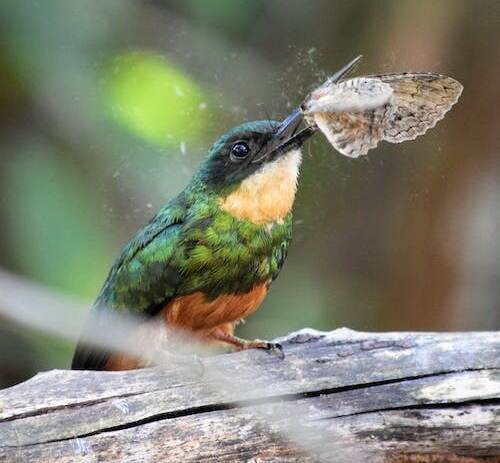
The Role of Birds
Birds are critical in controlling gypsy moth populations. They consume gypsy moth larvae and adults, thus reducing their numbers. The presence of birds in a forest can significantly reduce the impact of gypsy moth outbreaks. Studies have shown that birds can consume up to 80% of gypsy moth larvae in infested areas, which can prevent defoliation and tree damage.
However, the effectiveness of birds in controlling gypsy moth populations is influenced by several factors, including bird diversity, abundance, and behavior. Certain bird species are more effective predators of gypsy moths than others. For example, chickadees, nuthatches, and woodpeckers are known to be voracious consumers of gypsy moth larvae.
Bird abundance is also an important factor. High bird abundance can result in a greater consumption of gypsy moth larvae, which can limit their population growth. Additionally, bird behavior can affect their impact on gypsy moth populations.
For example, birds may focus their foraging efforts on certain tree species that are preferred by gypsy moths, resulting in a more effective control of gypsy moth larvae.
The Role of Gypsy Moths
Gypsy moths also have a significant impact on bird populations. The larvae of gypsy moths feed on leaves, which can reduce the availability of food for birds. This can lead to a decline in bird populations, particularly during gypsy moth outbreaks.
In addition, gypsy moths can affect the quality of bird habitat. Defoliation caused by gypsy moth outbreaks can reduce the diversity of tree species and alter the structure of forests, which can affect bird nesting and foraging behavior.
Gypsy Moth Impact on Bird Populations
Defoliation caused by gypsy moths can have a negative impacts on bird populations. Defoliation can reduce the number of suitable nesting sites for ground- and tree-nesting birds and reveal nesting sites to predators, which may cause nesting birds to abandon their nests.
The forest floor may become inhospitable for breeding birds following a gypsy moth outbreak due to a lack of shade and foraging sites, which could cause food shortages later in the season. Gypsy moth infestations can lead to a decline in bird species that typically inhabit closed canopy forests.
However, repeated defoliation of the upper canopy of the forest can lead to the creation of snags, which can become nesting locations for some species. Overall, the impact of defoliation on bird populations is complex and depends on several factors.
Gypsy Moth Impact on Massachusetts
The gypsy moth caterpillars have had a significant impact on Massachusetts over the past few years, causing defoliation in several counties. Although the state has a long history with the pest, a period of calm was achieved by releasing a fungus called Entomophaga maimaiga, which kills the caterpillars in their later life cycle.
However, this calm period ended when drought conditions hit the state in 2015, which prevented the fungus from thriving and led to a surge in gypsy moth populations. The situation worsened in 2016, when even more counties experienced drought conditions and the gypsy moth defoliation increased to over 350,000 acres of trees, the most significant defoliation in decades.
The outbreak garnered much attention due to the noticeable appearance of the caterpillars and raised concerns about the environment’s possible impact, including bird populations.
Therefore, examining the complex relationship between birds and gypsy moths is essential to determine their influence on Massachusetts birds’ population and the impact of repeated canopy defoliation on bird populations.
Birds That Eat Gypsy Moths
House Sparrrow
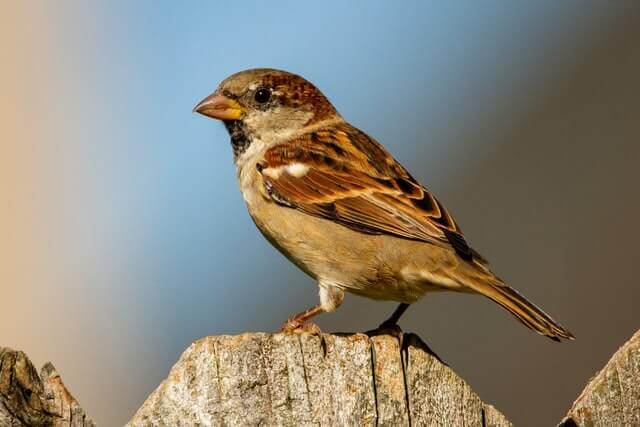
House Sparrows play a crucial role in maintaining ecosystem balance by curbing gypsy moth populations. Introducing House Sparrows to your yard can help control gypsy moth caterpillars, a pest known for its detrimental impact on foliage.
However, it’s worth noting that during their breeding season, House Sparrows might inadvertently limit caterpillar availability, possibly affecting their own food supply. Harnessing the ecological role of House Sparrows could aid in maintaining the health of your local environment and promoting natural balance.
- Size: 6.3-8.5 in (16-21.5 cm)
- Weight: 1.0-1.1 oz (28.5-32 g)
- Wingspan: 9.8-12.8 in (25-32.5 cm)
- Range: Across USA, Canada, and Mexico.
- Habitat: Flourishes in fields, forest edges, and suburban yards rich in trees and shrubs.
- Diet: Varied, including insects, caterpillars, spiders, fruit, berries, seeds, and grains.
Read more: How to Attract Sparrows to your Backyard? (Like A Pro)
Eastern Bluebirds
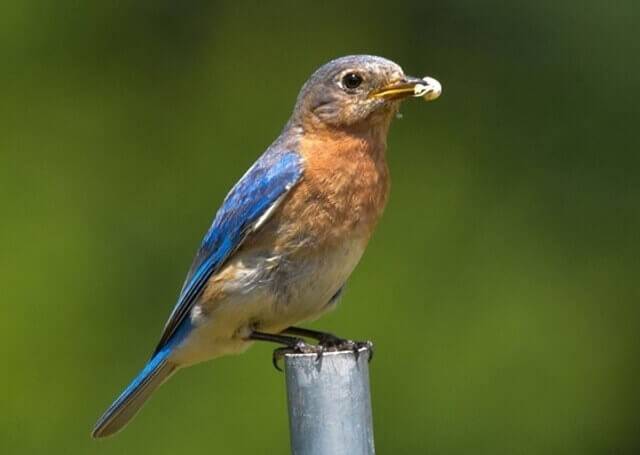
Eastern Bluebirds are a very important part of the ecosystem because they eat gypsy moths. One way to help keep the gypsy moth population under control is by introducing bluebirds to your yard, which feed on these caterpillars.
However, bluebirds have been found to eat these pests during their breeding season and may be helping keep populations under control by reducing food availability for larvae.
- Length: 6.3-8.5 in (16-21.5 cm)
- Weight: 1.0-1.1 oz (28.5-32 g)
- Wingspan: 9.8-12.8 in (25-32.5 cm)
- Range: USA, Canada, Mexico.
- Habitat: Fields, forest edges, suburban yards with lots of trees or shrubs.
- Diet: Insects, caterpillars, spiders, fruit, berries, seeds and grains.
Read more:
- How to Attract Eastern Bluebirds to your yard?
- Interesting Eastern Bluebird Facts
- 10 Best Birdhouse for Bluebirds
Blue Jay
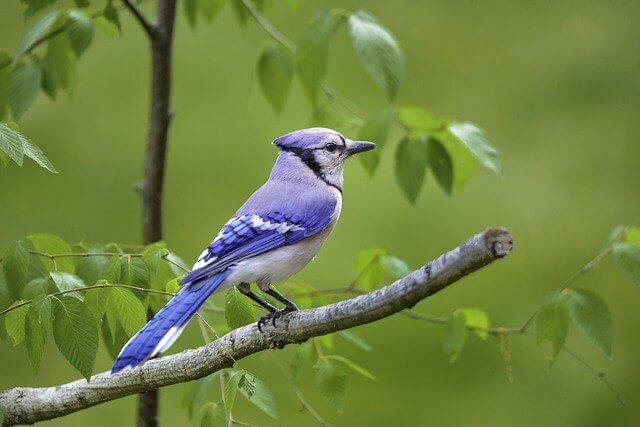
For years, Blue Jays have feasted on gypsy moths and other pests. In the springtime, their diet consists of about 80% fruit with some insects in the mix.
As summer approaches, however, more insects become available for them to eat as larvae and pupae, so they can store up fat reserves for winter. Blue jays will take any opportunity to snack on an insect if it’s nearby!
- Length: 9.8-12.2 in (25-31 cm)
- Weight: 2.5-3.6 oz (70-101 g)
- Wingspan: 13.4-17.3 in (34-44 cm)
- Range: Eastern United States, Canada, Central America, and Northern South America.
- Habitat: Deciduous forests, coniferous forests, and residential areas.
- Diet: Seeds, fruits, insects, worms and snails.
Read more:
- How to Attract Blue Jays to your Yard?
- Do Blue Jays Migrate? The Truth
- What do Blue Jay Eat – All The Facts
- 15 Best Bird Feeders for Blue Jays
Gray Catbird
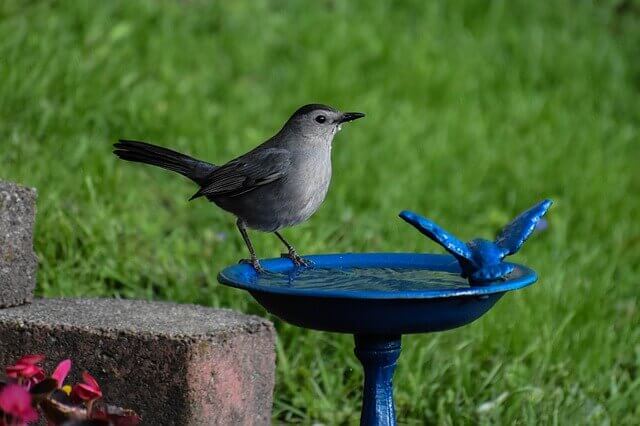
The Gray Catbird is a small songbird native to North America. The birds are omnivores and will eat whatever they can find, but seem especially drawn to insects such as the gypsy moth.
This makes them a natural ally in fighting this invasive species of moth, which damages trees and crops across the northeast US and parts of Canada.
- Length: 8.3-9.6 in (21-24.5 cm)
- Weight: 0.8-2.0 oz (23-57 g)
- Wingspan: 8.7-12.0 in (22-30.5 cm)
- Range: Eastern United States includes southeastern Virginia, North Carolina, and central Florida.
- Habitat: Open woodlands near the edges of fields or brushy areas.
- Diet: Insects, seeds, berries and occasionally fruit.
Chipping Sparrow
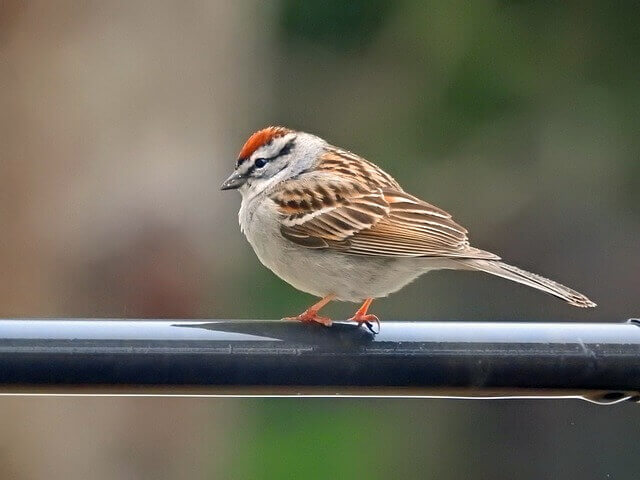
Chipping Sparrows have been found to be a major contributor in the decline of Gypsy Moth populations. Chipping Sparrows are often attracted to forested areas and feed on caterpillars, including those of the Gypsy Moth.
These birds will then store these insects in caches for later consumption. In some cases, it has been observed that Chipping Sparrows will hoard as many as 1,000 moth caterpillars at one time!
- Length: 4.7-6.3 in (12-16 cm)
- Weight: 0.4-0.58 oz (11-16.5 g)
- Wingspan: 8.0-8.3 in (20.3-21.1 cm)
- Range: Eastern and Central United States, Canada, Mexico, Europe and Asia.
- Habitat: Gardens, fields, forests and even near rivers.
- Diet: Insects, seeds, berries and other invertebrates.
Brown-headed Cowbird
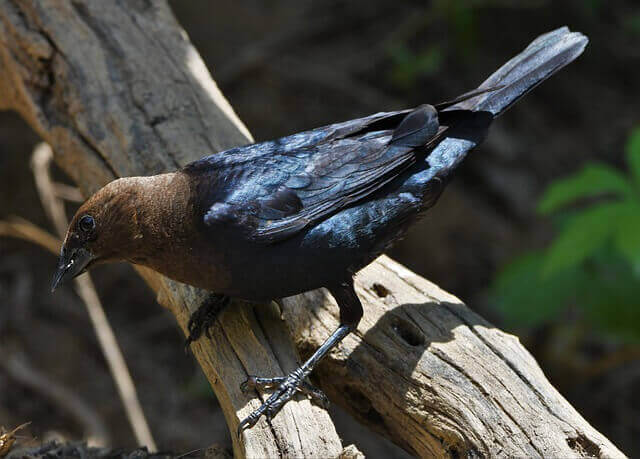
Brown-headed cowbirds eat gypsy moths. They have an important ecological role as a predator to control the population of this invasive species.
These birds feed primarily on insects, including leafhoppers, grasshoppers, and gypsy moth larvae, which they find by foraging in fields or flying out over forested areas. When food is scarce, cowbirds may feed on suet from bird feeders.
- Length: 7.1-9.1 in (18-23 cm)
- Weight: 1.5-1.8 oz (41-51 g)
- Wingspan: 14.0-14.2 in (25.6-36.1 cm)
- Range: Central Canada to Florida and Mexico, Central America south to Colombia and Ecuador.
- Habitat: Open habitats such as meadows, prairies, pastures, agricultural fields and suburbs.
- Diet: Insects, fruit, berries and seeds.
American Crow
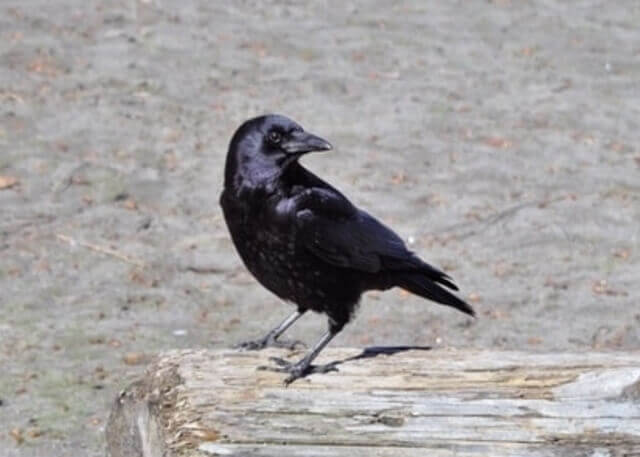
Gypsy moths are a pest to trees, but now crows may be the key to stopping their destruction. Crows are nature’s garbage disposal and will eat just about anything, including gypsy moth larvae.
Crows feed on gypsy moth larvae and adults, so the crows help to keep populations down by eating as many gypsy moths as possible when they emerge from their cocoons in early spring.
- Length: 15.7-21.1 in (40-53.5 cm)
- Weight: 11.1-21.9 oz (315-620 g)
- Wingspan: 33.5-39.8 in (85-101 cm)
- Range: North America, Northern Mexico.
- Habitat: Rural and urban areas.
- Diet: Fruit, nuts, berries, grains and insects.
Read more:
Common Grackle

Grackles have been observed eating many of these destructive creatures. Although grackles can be found all over the eastern United States, they have taken up residence near gypsy moth infestations and act as a natural defense against this pestilence by preying on them for food.
Grackles have become the nemesis of the gypsy moth. With their voracious appetites, these birds eat up to a third of all caterpillars they find in trees and shrubs.
- Length: 11.0-13.8 in (28-35 cm)
- Weight: 2.7-5.0 oz (75-143 g)
- Wingspan: 13.8-18.1 in (35-46 cm)
- Range: North America, Central America, South America, and into southern Canada.
- Habitat: Woodlands, grasslands, wetlands, forests, and even deserts.
- Diet: Insects like beetles and caterpillars but also fruits or berries.
Baltimore Oriole
The Baltimore Orioles have been fighting the invasion of gypsy moth larvae for years. The larvae invade in the spring and continue to grow until they pupate into moths.
These birds have been fighting back by destroying egg masses, larvae, pupae, cocoons and other items that can help make gypsy moths grow.
- Length: 6.7-7.9 in (17-20 cm)
- Weight: 1.1-1.4 oz (31-41 g)
- Wingspan: 8.7-12.2 in (22-31 cm)
- Range: Most of the Eastern United States, Canada, and Mexico.
- Habitat: Urban areas, woodlands, marshes and prairies.
- Diet: Nectar, insects, fruit and berries.
Read more:
Bullock’s Oriole
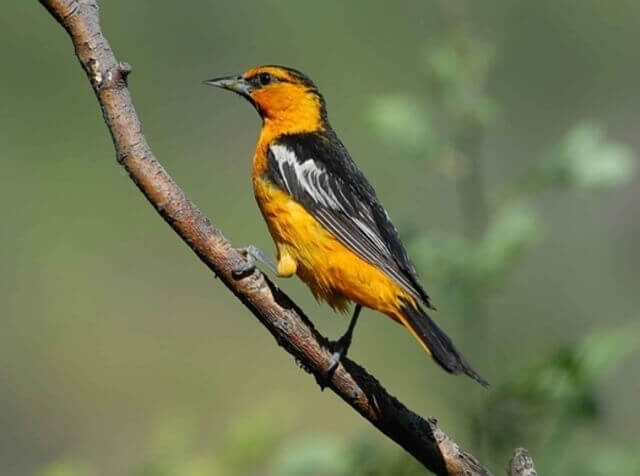
Bullock’s orioles are a small but vocal bird species that is found in the Eastern United States. These birds will eat anything from seeds to caterpillars, and they have been known to feed on gypsy moth larvae as well.
This makes them an effective natural weapon against the spread of this invasive pest species.
- Length: 6.3-7.9 in (16-20 cm)
- Weight: 1.0-1.5 oz (30-43.5 g)
- Wingspan: 11.4-12.4 in (29-31.5 cm)
- Range: North America, including Mexico and Canada.
- Habitat: Pine forests, open woodlands, desert scrubland, and cactus shrublands.
- Diet: Mostly fruit, but they also eat insects, spiders, and lizards.
Red-winged Blackbird

Red-winged blackbirds are effective predators of the gypsy moth. In particular, red-winged blackbirds reduce the population of this pest by eating larvae and pupae in both natural and agricultural landscapes, limiting the number of moths that would otherwise be available to infest plants.
It has been found that areas with high numbers of red-winged blackbirds have fewer populations of gypsy moths than those without them.
- Length: 6.9-9.4 in (17.5-24 cm)
- Weight: 1.2-2.7 oz (33-76 g)
- Wingspan: 11.8-16.1 in (30-41 cm)
- Range: USA, Canada, and Mexico.
- Habitat: Found in freshwater habitats near wetlands, such as ponds or streams.
- Diet: Mainly of insects but also includes seeds, fruits, and other plant material.
American Robin
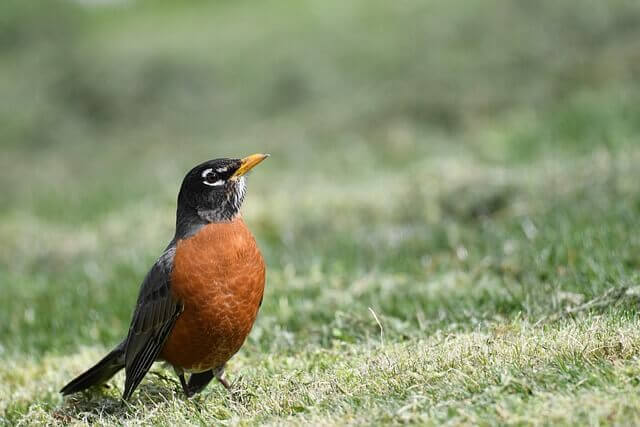
Robins are an important part of the ecosystem because they eat Gypsy Moths. The American Robin is a migratory bird that arrives in spring to take advantage of the new plant growth, which includes many species of caterpillars and other insects that robins eat.
Gypsy Moth populations can be reduced by as much as eighty percent when robins are present due to their voracious appetite for these caterpillars.
- Length: 8.3-11.2 in (21-28.5 cm)
- Weight: 2.8-3.0 oz (78-86 g)
- Wingspan: 11.8-15.7 in (30-40 cm)
- Range: North-eastern United States to southern Canada and south to Central America.
- Habitat: Open woodlands, suburbs, parks, agricultural fields and brushy hillsides with scattered trees.
- Diet: Mainly insects, berries and other fruit.
Read more:
Downy Woodpecker
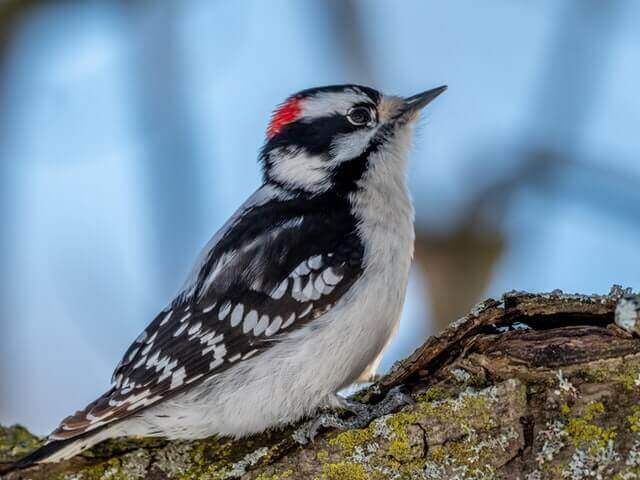
Downy Woodpeckers are often overlooked as being a pest themselves, but they actually help control the population of Gypsy Moths. Downy Woodpeckers eat larvae and pupae from trees, or that have fallen to the ground.
This means they keep these populations in check, so other pests don’t take over, which would result in huge economic losses for farmers and people who work with plants for a living.
- Length: 5.5-7.1 in (14-18 cm)
- Weight: 0.71-1.0 oz (20-29 g)
- Wingspan: 9.5-12.2 in (24-31 cm)
- Range: Eastern United States, Canada and parts of Central America.
- Habitat: Forests, backyards, and parks with wooded areas as well as large cities.
- Diet: Mainly of insects, but also include nuts, seeds and berries.
Read more: How to Attract Downy Woodpeckers: Expert Tips!
European Starling
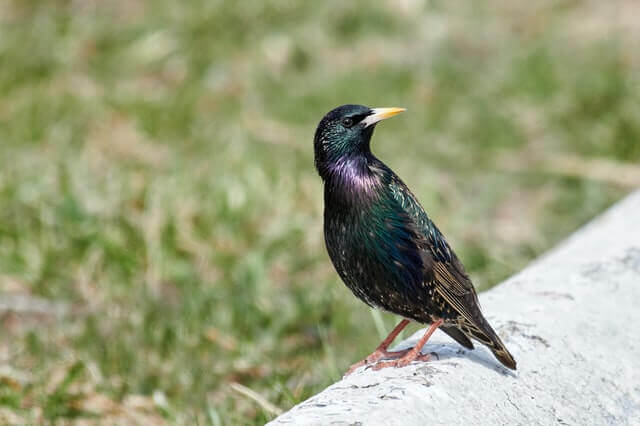
European Starlings are non-native to the United States, but in recent years they have become a key player in controlling Gypsy Moth populations. They have been shown to reduce gypsy moth populations by up to 95%.
Since European Starlings eat gypsy moth caterpillars as larvae and pupae, they provide an effective means of controlling the population by limiting their numbers before adulthood.
- Length: 8.1-9.1 in (20.5-23 cm)
- Weight: 2.1-3.4 oz (60-96 g)
- Wingspan: 11.8-15.7 in (30-40 cm)
- Range: North America, Europe, Asia, and Africa.
- Habitat: Urban habitats and agricultural fields.
- Diet: Seeds, berries some fruit and insects.
Read more: How To Attract European Starlings To Your Yard?
Spotted Towhee
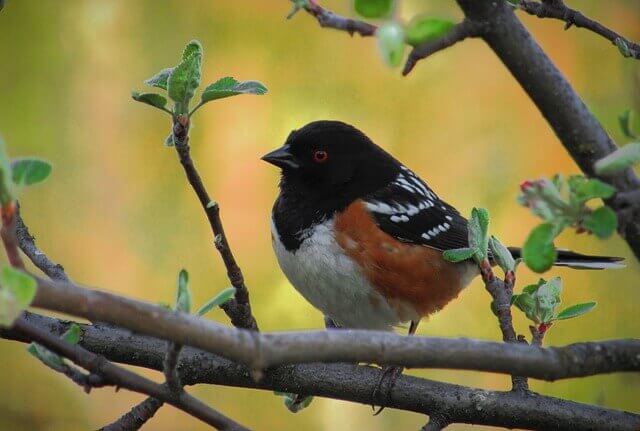
Many people in North America have never seen a Spotted Towhee. The spotted towhee is one of the few bird species that feed on gypsy moth caterpillars, and for this reason they are considered an important part of the ecosystem.
It’s estimated that each towhee can eat up to 500 gypsy moth caterpillars per day. They can be found all over the country, but they nest in eastern forests where gypsy moth populations are high.
- Length: 6.7-8.5 in (17-21.6 cm)
- Weight: 1.13-1.8 oz (32-50 g)
- Wingspan: 10.5-11.0 in (26.7-27.9 cm)
- Range: Southwestern United States, and Canada.
- Habitat: Coniferous forests, deciduous woodlands, and grassy fields.
- Diet: Insects, fruit, berries, seeds, and nectar from flowers.
Read more: How to Attract Towhees to your yard?
Eastern Towhee
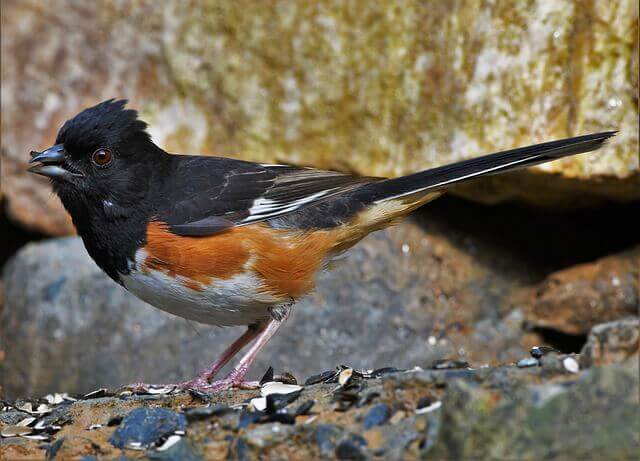
The Eastern Towhee is a small bird that is found in the eastern half of North America. This species eats a variety of insects, and will often forage for caterpillars on trees. The larvae from the gypsy moth are a common food source for these birds.
Eastern Towhees help control the population of these pests through predation. They feast on them during their breeding season from April to July, when it is time for them to feed their young offspring.
- Length: 6.9-8.2 in (17.5-21 cm)
- Weight: 1.1-1.8 oz (31-52 g)
- Wingspan: 7.9-11.2 in (20-28.5 cm)
- Range: Canada, USA, Mexico and even down into Central America.
- Habitat: Deciduous forests, woodlands, and thickets.
- Diet: Seeds, insects, berries and fruit.
Yellow-billed Cuckoo

The Yellow-billed Cuckoo is a species of bird that feeds on Gypsy Moths. The cuckoos often feed in groups, where they make quick dives to catch the moths as they fly by.
They then consume the moth and regurgitate it, before repeating this process again and again. This feeding habit has proved beneficial for the environment which helps keep their population from getting out of control.
- Length: 9.8-12.0 in (25-30.5 cm)
- Weight: 1.9-2.3 oz (54-64 g)
- Wingspan: 14.6-17.1 in (37-43.5 cm)
- Range: North America, Central America and parts of South America.
- Habitat: Forests, woodlands, gardens and hedgerows.
- Diet: Mainly of insects, some seeds, fruits and berries.
Black-capped Chickadee
Black-capped Chickadees eat gypsy moth eggs. This is a great benefit to people because the eggs are where the population of these pests come from. Chickadees are small birds that is not afraid to venture into an unknown territory, which allows them to fly close enough and consume these eggs before they hatch.
Chickadees will peck at any egg they find and will eventually wipe out a population if given enough time.
- Length: 4.9-6.1 in (12.5-15.5 cm)
- Weight: 0.3-0.5 oz (9-15 g)
- Wingspan: 6.3-8.5 in (16-21.5 cm)
- Range: North America, including Mexico and Canada.
- Habitat: Coniferous and deciduous forests, orchards, parks and gardens.
- Diet: Insects, seeds, nuts and berries.
Read more: Unique Black-capped Chickadee Facts You Need To Know!
White-Breasted Nuthatch
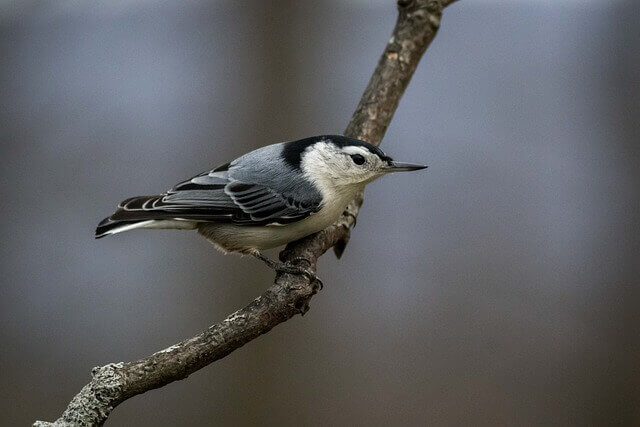
The White-breasted Nuthatches are a small bird species that has adapted to feed on the eggs and larvae of Gypsy Moths. The nuthatch uses its beak to poke holes in the egg, allowing them to consume it before it hatches.
They can also dig into the soil where they find larva with their beaks and claws. In areas where these birds live near forests, they are important for controlling populations of this invasive insect pest.
- Length: 4.7-5.5 in (12-14 cm)
- Weight: 0.7-1.1 oz (19-31 g)
- Wingspan: 8.3-10.5 in (21-27 cm)
- Range: Canada to Mexico and the Eastern United States.
- Habitat: Coniferous forests, mixed woodlands, orchards, suburbs and parks.
- Diet: Primarily eats insects but will also eat seeds, nuts, berries and fruit.
Read more: How to Attract Nuthatches to your Backyard?
Tufted Titmouse
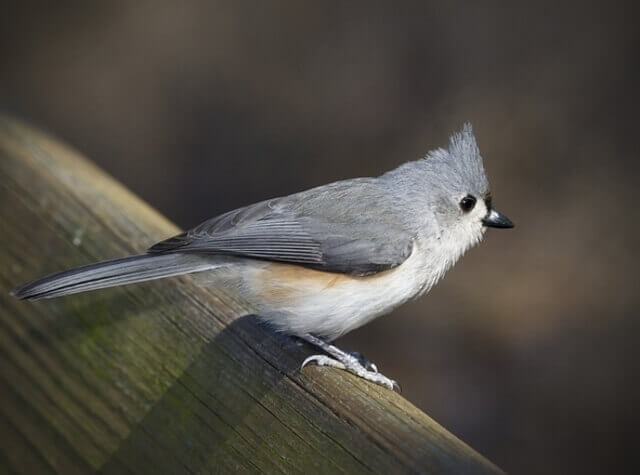
The Tufted Titmouse is a songbird that lives in North America. These birds are active year-round and eat mostly insects. One of the most important food sources for these birds is Gypsy Moth eggs and larvae, which they find by looking on tree trunks or searching low foliage with their bill tipped up at an angle.
It is beneficial to attract this bird to your yard, because they can really help keep the population of Gypsy Moths under control.
- Length: 5.4-6.4 in (13.7-16.3 cm)
- Weight: 0.6-0.9 oz (18-27 g)
- Wingspan: 7.9-10.6 in (20-27 cm)
- Range: Eastern half of North America, Mexico and Central America.
- Habitat: Forests, woodlands and suburban areas.
- Diet: Mainly of insects, nuts, seeds and berries.
Read more: How to Attract Tufted Titmouse to your yard?
Related Post: 16 Birds That Eat Japanese Beetles: Nature’s Pest Control

